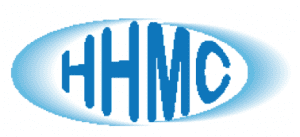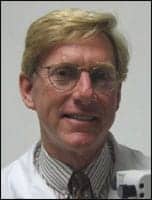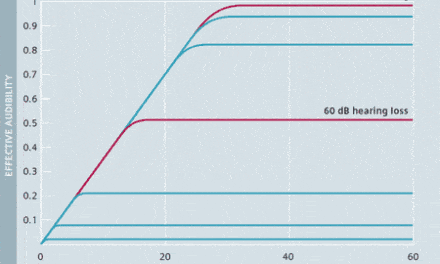OTC hearing aid legislation continues its inevitable progress through the FDA, weaving past the lobbyists—for and against—and then landing in the laps of the necessary committees in Congress. Soon enough, the current set of players in the audiology industry must deal with this change. It cannot be ignored. Yet there are those who will do so, accepting the risk that they will not be impacted, as though OTCs and PSAPs never existed.
Those who prepare well now will do best in adapting and surviving the disruptions to the audiology marketplace.
Now, is a good time to review your loyalty marketing strategies. What is loyalty marketing?
Loyalty marketing refers to building trust among current customers and rewarding them for consistently conducting business with a company so that they will continue to do so.
For many companies, 80 percent of their business comes from 20 percent of their customer base.1 In previous generations, loyalty programs often came in the form of redeeming proofs-of-purchase for special products. Today, they are more commonly operated through card purchases using digital information. In turn, this digital information can be used to discover more methods of instilling and reinforcing customer loyalty.
Audiology can and must employ continuous, long-term loyalty marketing programs!
Existing customers cost less to reach and sell, are less vulnerable to competition, and buy more over the long term. A five percent increase in the customer retention rate tends to increase profits by 25-125%. The loyalty business model relies on training employees to achieve a specific paradigm: Quality of product or service leads to customer satisfaction, which leads to customer loyalty, which leads to increased profitability. Loyalty marketing is an extension of that effort, relying on incentives, word of mouth, and patient/customer to patient/customer referrals to attract new customers.²
Incentive programs have gained significant traction online. Forty-three percent of companies that use incentives to increase customer loyalty do so using the Internet as a channel.
Audiology practices can offer patients who are consistent appointment keepers a “points program” or “punch card” for each appointment kept, and a reward for a certain number of points or for each completed punch card. Rewards could include a discount, a Starbucks’ coffee card, or a round-trip train ticket from New York to Boston. The end result may be improved efficacy and patient retention, or a satisfied patient who may refer family members, friends, or co-workers to the practice, generating new sources of revenue.
Another patient retention strategy includes sending direct mail letters of appreciation in which you can include new information, differentiation, and technology, or offer a service innovation. Ask for a response, and incentivize/reward all those who do so. This reminder strategy binds them to you. This helps them default their future hearing healthcare choices to you.
What kinds of customers respond to loyalty marketing?
Loyalty marketing concentrates on strengthening the relationships with patients/customers that a clinic or practice already has. Therefore customers/patients who make regular purchases and/or who are fitted every four to five years are most impacted by a rewards program, as their repeated business earns them more rewards.
New customers may be reached through incentives and referrals from existing patients/customers. This is a unique opportunity for those who seek to add new “mild-to-moderate hearing loss patients” to their practice by providing the less-expensive OTC technologies as well as adding their proven expertise to the patient experience, establishing a relationship of respect and trust, and enhancing the possibility that this new patient will return as their worsening hearing health status dictates the need for upgraded hearing aids.
New patient encounters over the phone and in person with your staff will need to be open and welcoming. Counsel patients to come to you first. It will be more expensive for patients to purchase an OTC product from a retail outlet and then visit a hearing healthcare provider for programming expertise. Recently-published audiology research documents a 45% return rate by customers who attempted to self-fit OTC hearing aids. Audiology professionals can help prevent this and earn the loyalty of these new entrants into the world of hearing healthcare.
Can you incentivize or reward them for making you the “first-fitting choice” or “preferred provider?” Absolutely yes, and you must do so, modestly, yet still send the clear and compelling message that you appreciate the honor to serve them. For example, advise the patient that your computer will notify you when they have made and kept five appointments, and they will be rewarded with five theater tickets, five steaks, a five-gallon gas card, or other incentive ideas you may have. This is all about maintaining your relationship with each patient/customer and your willingness to express your appreciation to them for choosing you and your practice.
Patient-to-patient referrals are the most profitable return on investment that a hearing healthcare practice can make, yet, as an industry of highly-educated healthcare professionals, we do not excel at this. You may consider offering a reward/incentive for each patient-to-patient referral that is provided to you. Increase the reward into tiers of prizes as more new patient referrals are provided.
Do consider inviting your database of past and present patients, as well as those tested with loss–no-sale customers, to a monthly educational seminar at your practice location, and provide snacks and beverages. Those who attend receive reward level one (a month’s supply of batteries); those who attend and bring along a hearing-impaired guest receive reward level two (dinner at a fine restaurant for two); those who attend with a guest who is converted to a patient receiving treatment will receive reward level three (perhaps an overnight stay at a popular resort hotel).
You should implement a system that can also be used to gather and store information. It can be used for market research or to develop more tailored promotional offers to customers/patients. Consider the use of customer relationship management (CRM) software, which will enable you to develop a greater understanding of the customer base, as well as create new possibilities for marketing promotions that build customer loyalty.
Consider inviting every patient who has ever been fitted at your practice to an annual picnic. Offer an incentive simply for the act of signing up (a bouquet of flowers, a baseball bat and ball, a Dr Seuss book, etc..). A small reward immediately establishes the value of the program and experience in the customer’s mind. Offer to provide every loyal patient who shows up with five new punches on their loyalty card, which can be traded in for new batteries, ear wax removal kits, etc.…,upon achieving a targeted number of punched holes in the cards.
Loyalty programs are an opportunity to express your appreciation to the customer/patient for that loyalty. This helps establish an emotional connection to your database of new and old patients. The ultimate benefits are patient retention and a sustainable revenue stream.
Consider a patient who is diagnosed and treated by you at age 40, with a life expectancy of 85 years. That means over the next 45 years, you may potentially fit her with new hearing aid technology every five years (estimate an average binaural selling price of $5,000) or nine total fittings during her lifetime (total estimate per-patient lifetime cost is $45,000, which is also your gross revenue for this patient). Now, compare this experience to a Big-Box retailer that “churns” out patients/customers and potentially fits a patient with new technology every three years, charging $3,000 per binaural fitting. The total number of fittings over the next 45 years will be fifteen for this same patient. Of course, you can’t compete on average selling price, but the total per-patient price over a lifetime is also $45,000. There is no difference in total price to the patient or in total revenue for the hearing healthcare specialist! When customer service and all else are equal, customers will decide which provider to choose based on their price.
In this case, you have demonstrated to the patient/customer you are equal in cost. Now you need to differentiate your practice with superior patient care, improved results, exceptional bonding skills, better communication skills, and incentivized loyalty programs that ensure the patient returns to you for all nine of their future fittings during their projected lifetimes. This is how you will compete in the new audiology marketplace.
On a final note, many years ago, Mercedes-Benz arguably made the world’s finest luxury automobile. The price was high and the market, though profitable, needed to be expanded. Company leaders were reluctant to add a less-expensive model to their product line, fearing a weakening of the brand’s reputation for excellence. They also thought that a more economical version would cannibalize the sales of the more expensive brand leader. The outcome draws parallels to the current audiology market in the United States. We fear OTC hearing aids will weaken our market just as Mercedes feared marketing a model that was a lesser version in efficiency, ability, luxury, and price. Their fears were unjustified; the Mercedes’ board members voted to allow the marketing department to proceed with manufacturing and selling the lesser version of their brand leader. The obvious result was an expansion of their market to more willing buyers who could afford the less-expensive, top-of-the-line model. They substantially grew the market while increasing gross revenue and profitability. And many of those new Mercedes’ buyers whose circumstances improved over time, traded up. That is called customer loyalty!
This same opportunity awaits hearing healthcare providers in the United States. We must embrace the new OTC technology because of the role it can play in the service of our patients’ hearing care needs. We can expand the market by providing it as a treatment option. We can implement our patient loyalty programs and make sure we hold on to the FDA-approved hearing aid market that is currently served. These new patients/entrants into our practices may stay loyal to us for all of their fitting needs, trading up when medically necessary, all their lives.
Thank you for your interest.
Bob Tysoe is an independent consultant at Hearing Healthcare Marketing Company (HHMC). He resides in Portland, Ore.
¹ www.marketing-schools.org/types-of-marketing/loyaltymarketing.html
² Wikipedia Loyalty Marketing, 2016






